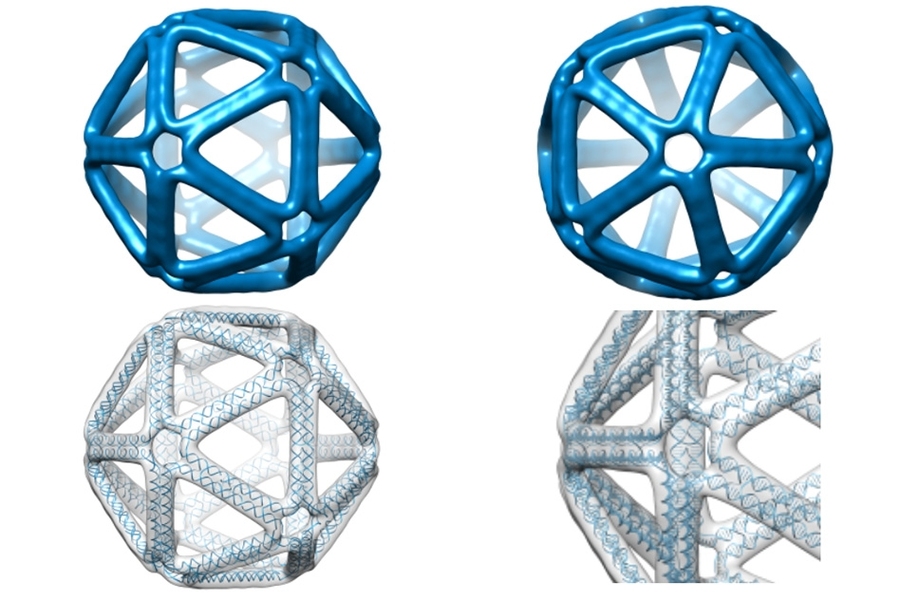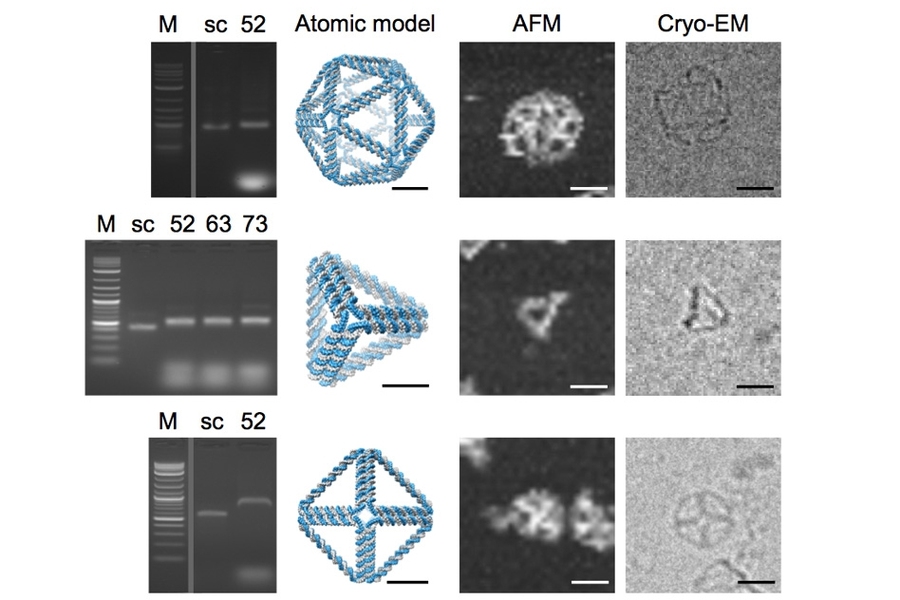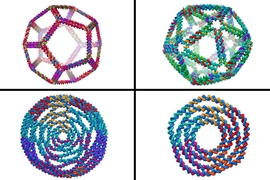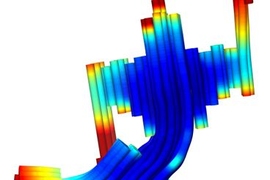Researchers can build complex, nanometer-scale structures of almost any shape and form, using strands of DNA. But these particles must be designed by hand, in a complex and laborious process.
This has limited the technique, known as DNA origami, to just a small group of experts in the field.
Now a team of researchers at MIT and elsewhere has developed an algorithm that can build these DNA nanoparticles automatically.
In this way the algorithm, which is reported together with a novel synthesis approach in the journal Science this week, could allow the technique to be used to develop nanoparticles for a much broader range of applications, including scaffolds for vaccines, carriers for gene editing tools, and in archival memory storage.
Unlike traditional DNA origami, in which the structure is built up manually by hand, the algorithm starts with a simple, 3-D geometric representation of the final shape of the object, and then decides how it should be assembled from DNA, according to Mark Bathe, an associate professor of biological engineering at MIT, who led the research.
“The paper turns the problem around from one in which an expert designs the DNA needed to synthesize the object, to one in which the object itself is the starting point, with the DNA sequences that are needed automatically defined by the algorithm,” Bathe says. “Our hope is that this automation significantly broadens participation of others in the use of this powerful molecular design paradigm.”
The algorithm first represents the object as a perfectly smooth, continuous outline of its surface. It then breaks the surface up into a series of polygonal shapes.
Next, it routes a long, single strand of DNA, called the scaffold, which acts like a piece of thread, throughout the entire structure to hold it together.
The algorithm weaves the scaffold in one fast and efficient step, which can be used for any shape of 3-D object, Bathe says.
“That [step] is a powerful part of the algorithm, because it does not require any manual or human interface, and it is guaranteed to work for any 3-D object very efficiently,” he says.
The algorithm, which is known as DAEDALUS (DNA Origami Sequence Design Algorithm for User-defined Structures) after the Greek craftsman and artist who designed labyrinths that resemble origami’s complex scaffold structures, can build any type of 3-D shape, provided it has a closed surface. This can include shapes with one or more holes, such as a torus.
In contrast, a previous algorithm, published last year in the journal Nature, is only capable of designing and building the surfaces of spherical objects, and even then still requires manual intervention.
Most previous work on DNA origami has explored 2-D and 3-D structures whose design required some steps to be done by hand, says Paul Rothemund, a research professor at Caltech, who was not involved in the paper.
“The current work provides a complete pipeline, starting from a 3-D form, and arriving at a DNA design and a corresponding predicted atomic model which can be compared quantitatively with experiments,” he says.
The team's strategy in designing and synthesizing the DNA nanoparticles was also validated using 3-D cryo-electron microscopy reconstructions by Bathe's collaborator, Wah Chiu at Baylor College of Medicine.
The researchers are now investigating a number of applications for the DNA nanoparticles built by the DAEDALUS algorithm. One such application is a scaffold for viral peptides and proteins for use as vaccines.
The surface of the nanoparticles could be designed with any combination of peptides and proteins, located at any desired location on the structure, in order to mimic the way in which a virus appears to the body’s immune system.
The researchers demonstrated that the DNA nanoparticles are stable for more than six hours in serum, and are now attempting to increase their stability further.
The nanoparticles could also be used to encapsulate the CRISPR-Cas9 gene editing tool. The CRISPR-Cas9 tool has enormous potential in therapeutics, thanks to its ability to edit targeted genes. However, there is a significant need to develop techniques to package the tool and deliver it to specific cells within the body, Bathe says.
This is currently done using viruses, but these are limited in the size of package they can carry, restricting their use. The DNA nanoparticles, in contrast, are capable of carrying much larger gene packages and can easily be equipped with molecules that help target the right cells or tissue.
The team is also investigating the use of the nanoparticles as DNA memory blocks. Previous research has shown that information can be stored in DNA, in a similar way to the 0s and 1s used to store data digitally. The information to be stored is “written” using DNA synthesis and can then be read back using DNA sequencing technology.
Using the DNA nanoparticles would allow this information to be stored in a structured and protected way, with each particle akin to a page or chapter of a book. Recalling a particular chapter or book would then be as simple as reading that nanoparticle’s identity, somewhat like using library index cards, Bathe says.
The most exciting aspect of the work, however, is that it should significantly broaden participation in the application of this technology, Bathe says, much like 3-D printing has done for complex 3-D geometric models at the macroscopic scale.
Bathe’s co-authors on the paper are Rémi Veneziano, a postdoc in the Department of Biological Engineering; Sakul Ratanalert, a graduate student in the departments of Biological Engineering and Chemical Engineering; and others from Baylor College of Medicine and Arizona State University.











